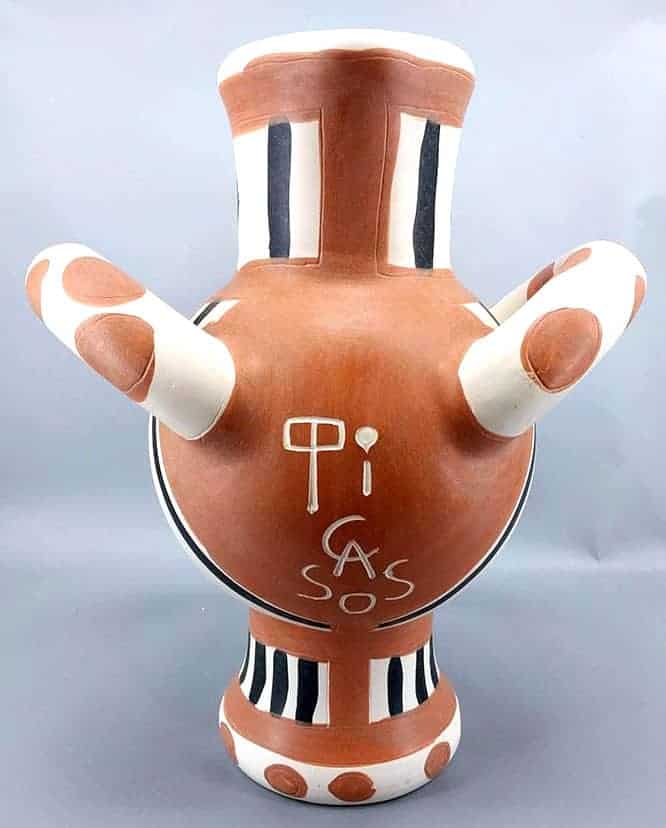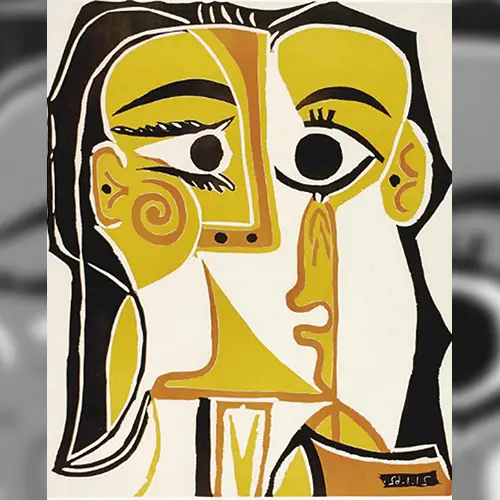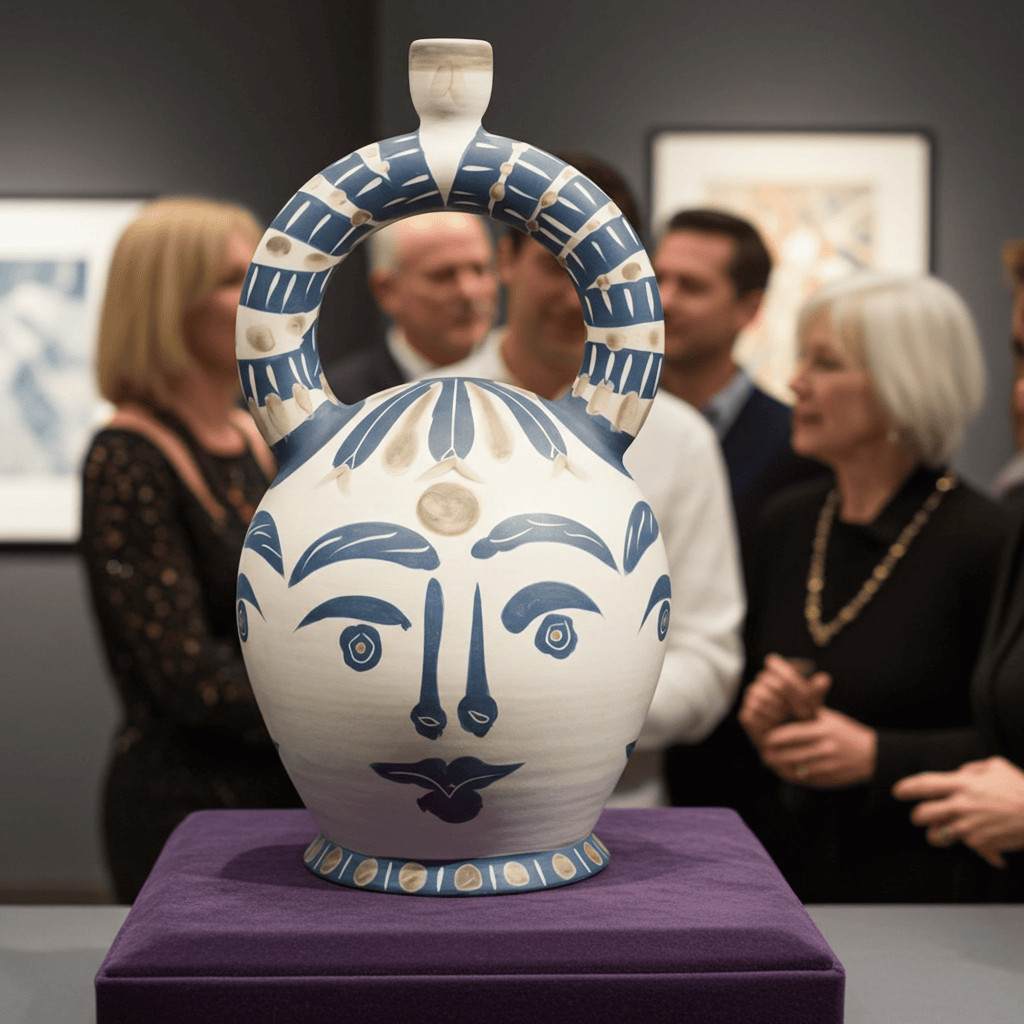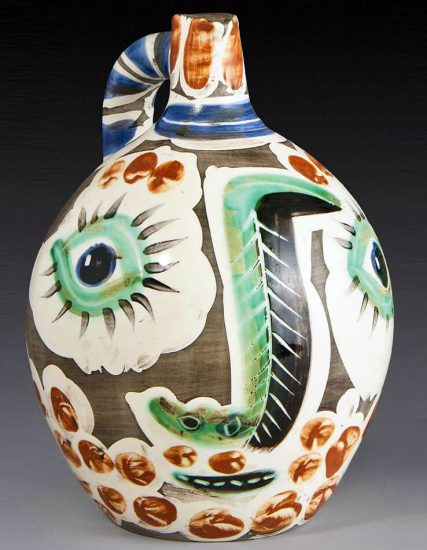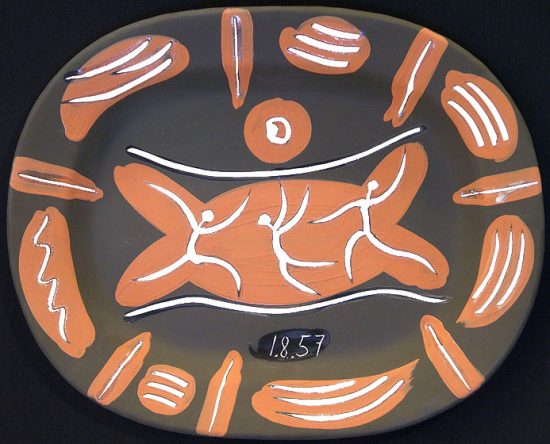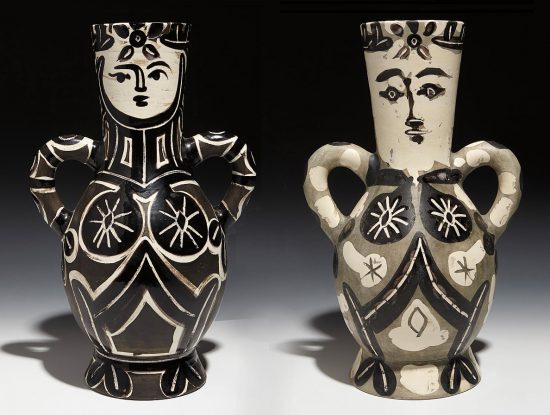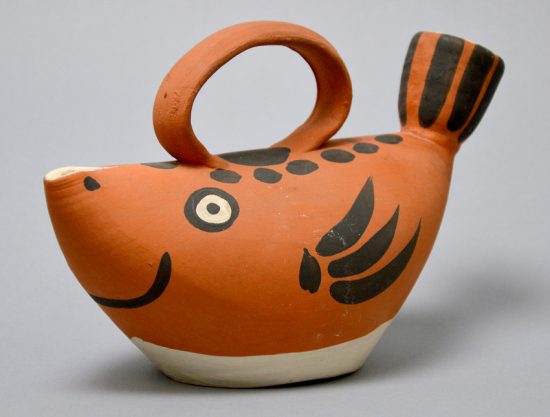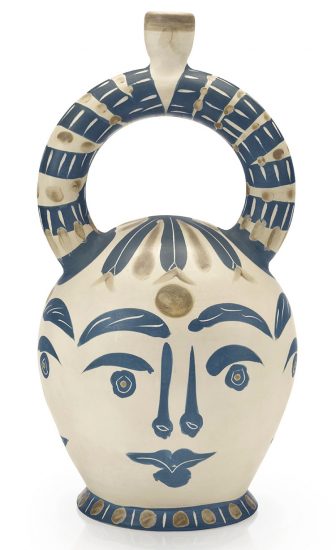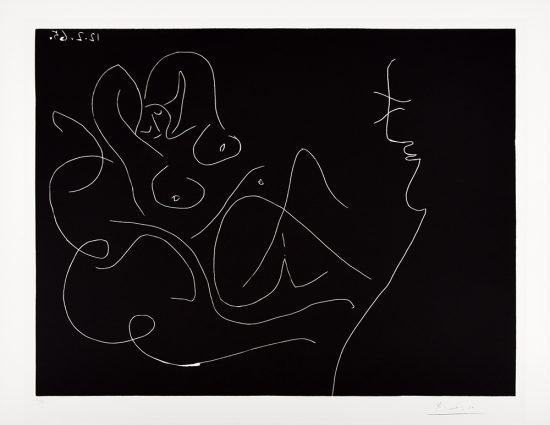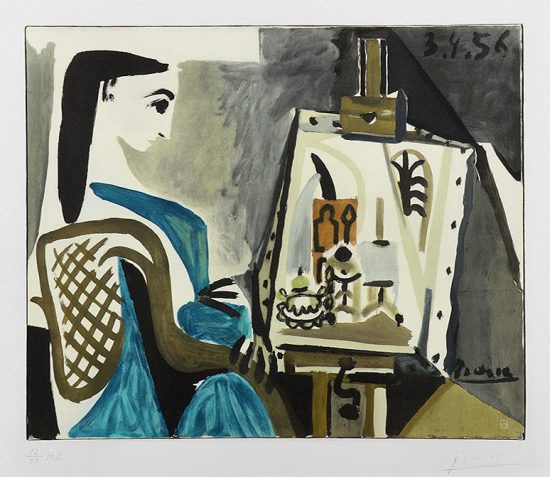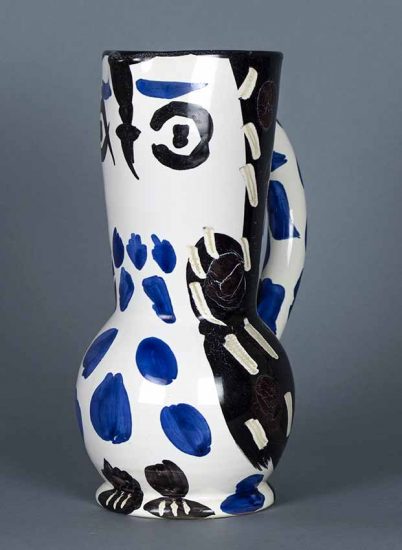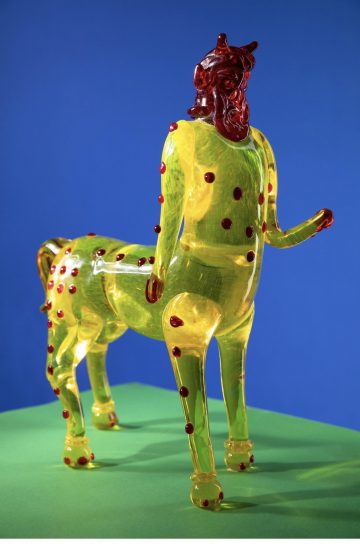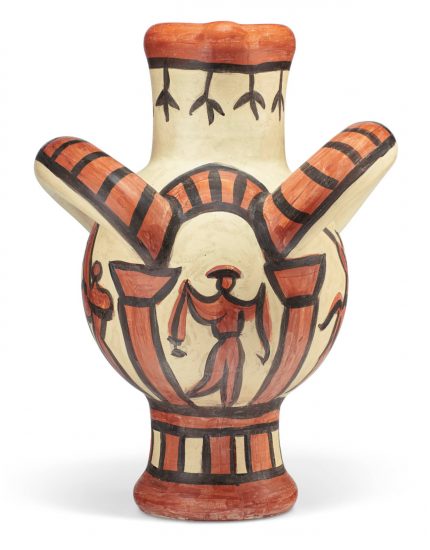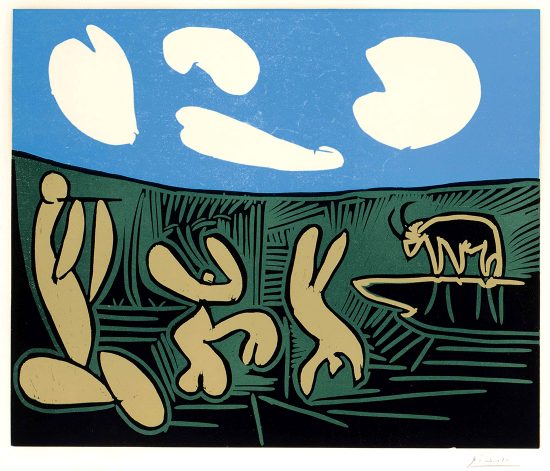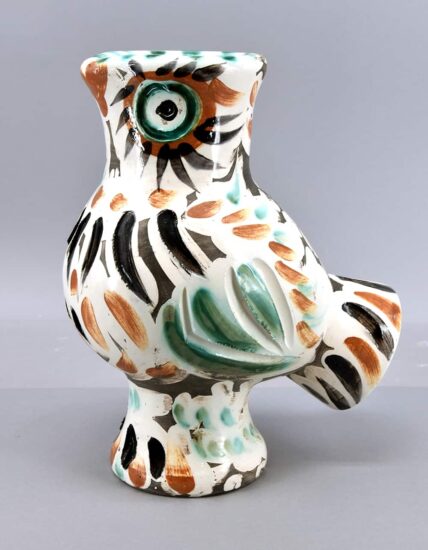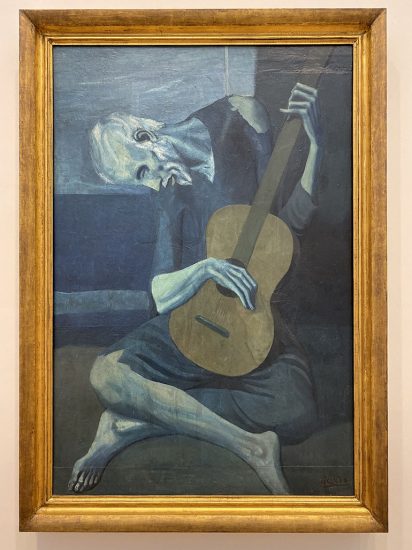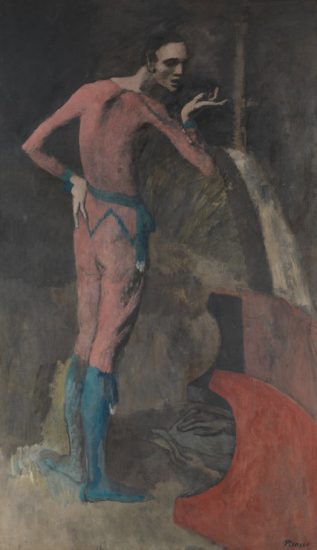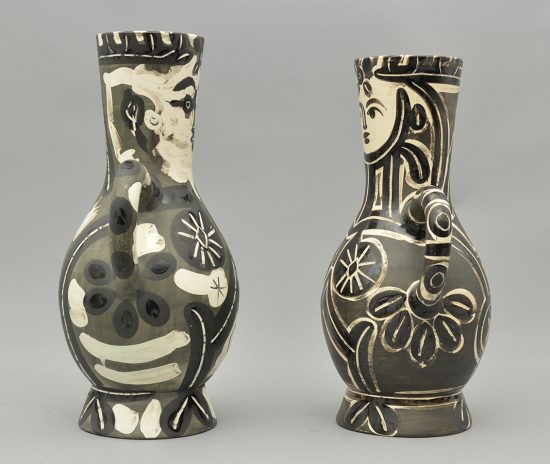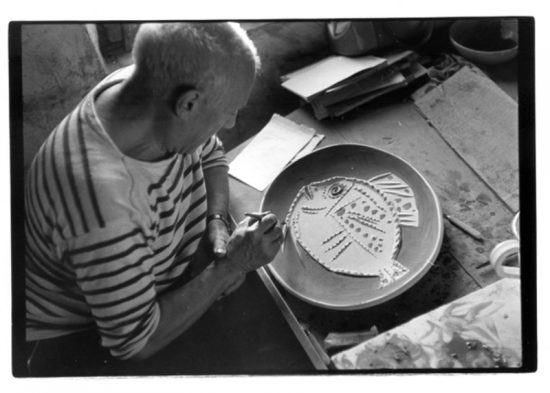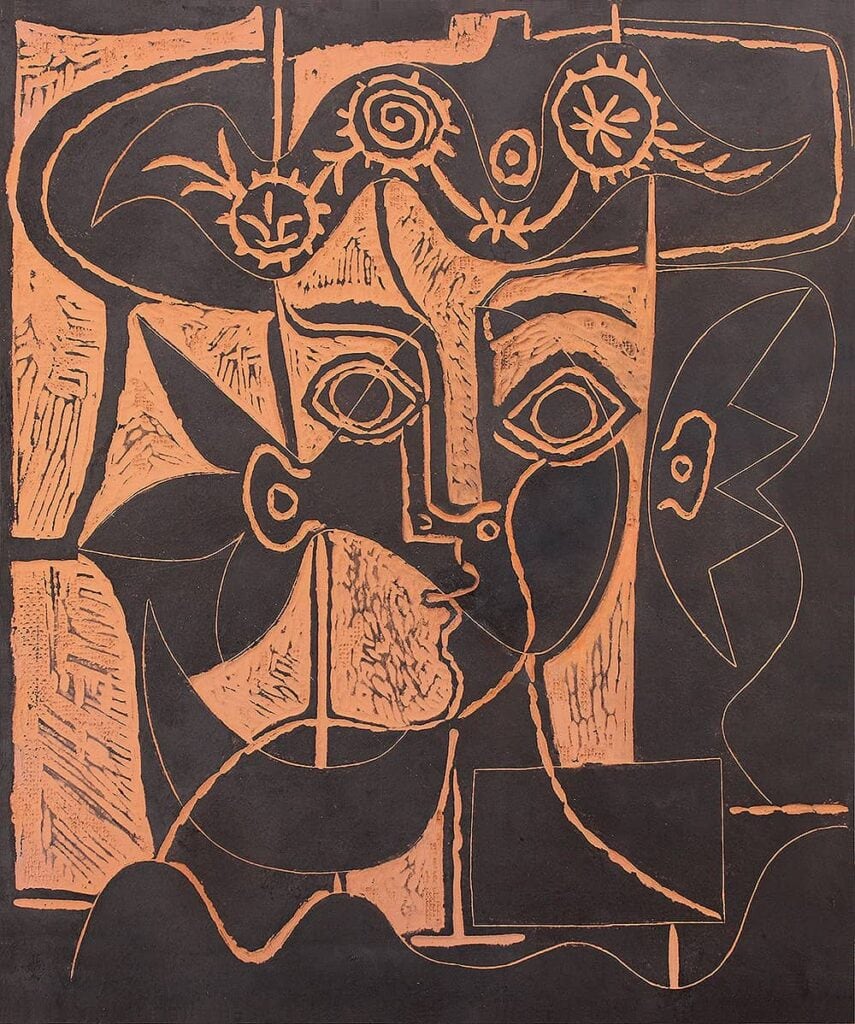
Key Highlights
- Pablo Picasso's ceramic works are highly sought after in the art world, known for their unique and innovative designs.
- Picasso's ceramics are a blend of traditional pottery techniques and modern artistic sensibilities, making them highly collectible among art enthusiasts.
- Collecting Picasso ceramics can be a great investment, as their value has been steadily increasing over the years.
- Picasso's ceramics offer a wide range of options, from plates and bowls to vases and sculptures, allowing collectors to find the perfect piece for their collection.
- Authenticating Picasso ceramics is important, as there are many reproductions in the market. Buyers should look for specific markings and signatures to ensure the authenticity of their purchase.
- Auction houses and online platforms are great places to find and purchase Picasso ceramics, offering a wide range of options for collectors.
Introduction
Pablo Picasso is one of the most celebrated and influential artists of the 20th century. Known for his pioneering work in modern art, Picasso's ceramics, including those created in collaboration with Georges Braque, are a testament to his boundless creativity and innovation. While he is primarily known for his paintings and sculptures, Picasso's foray into ceramics added a new dimension to his artistic repertoire.
Picasso's interest in ceramics began in the late 1940s when he moved to the town of Vallauris in the south of France. There, he collaborated with skilled potters at the Madoura Pottery, experimenting with different techniques and pushing the boundaries of the medium. What emerged were stunning and unique earthenware ceramic pieces that showcased Picasso's distinctive style and artistic vision.
Understanding Picasso's ceramics requires an appreciation for his wider body of work. His ceramic pieces reflect his exploration of form, color, and texture, while also incorporating elements of his iconic motifs and subjects.
From playful and whimsical designs featuring animals and mythical creatures to more complex forms such as pitchers and vases, Picasso's ceramics offer a diverse range of options for collectors.
Understanding Picasso's Ceramics
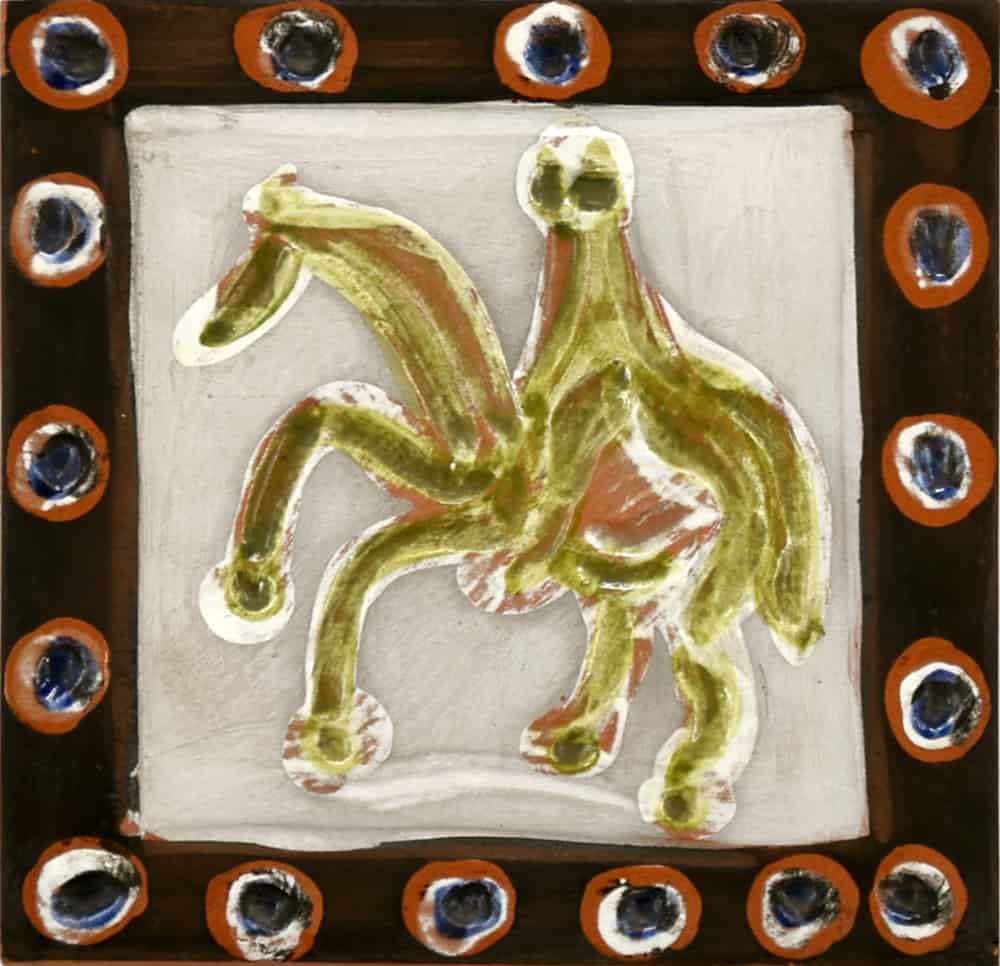
Picasso's venture into ceramics marked a new chapter in his artistic career. In the town of Vallauris, located in the south of France, Picasso delved into the world of pottery and collaborated with local artisans at the Madoura Pottery. This creative partnership allowed Picasso to explore new artistic possibilities and experiment with different materials and techniques, ultimately leading to dedicated exhibitions in cities like Paris.
Picasso's ceramics are a fascinating blend of traditional pottery and his unique artistic vision. He drew inspiration from ancient pottery techniques while incorporating his own modern and contemporary art sensibilities. The result was a collection of ceramic works that were both innovative and captivating.
One of the most significant influences on Picasso's ceramic works was his relationship with his second wife, Jacqueline Roque. Jacqueline, who Picasso married in 1961, became a muse for the artist and inspired many of his ceramic designs. Her elegant features and graceful presence can be seen in the delicate and refined forms of Picasso's ceramics.
Vallauris, the town where Picasso created his ceramics, held a special place in his heart. It was a place of inspiration and artistic freedom for the artist. The vibrant and colorful atmosphere of Vallauris seeped into Picasso's ceramic works, resulting in pieces that exude a sense of joy and vitality.
Picasso's ceramics also reflect his ability to seamlessly blend different artistic mediums. His ceramic works, including pieces such as Face no. 192, carry the hallmarks of his paintings and sculptures, with elements of Cubism, abstraction, and surrealism present in their design. This fusion of artistic styles and techniques, along with their connection to his childhood and newfound passion, makes Picasso's ceramics a must-have for any art collector.
The Evolution of Picasso's Ceramic Art
Picasso's journey into ceramics began in the late 1940s when he moved to the town of Vallauris in the south of France. It was there that he discovered the Madoura Pottery and started experimenting with clay and glazes. Initially, the ceramic works were relatively simple, featuring utilitarian objects like Picasso's plates and bowls.However, as he delved deeper into the medium, his designs became more complex and sophisticated.
One of the significant influences on Picasso's ceramic art was his relationship with Jacqueline Roque, whom he married in 1961. Jacqueline became a prominent figure in Picasso's life and art, and her presence is evident in many of his ceramic works. He often depicted her elegant features and graceful form in his designs, creating pieces that exude a sense of intimacy and tenderness, such as in his ceramic piece "Visage de femme."
Over the years, Picasso's ceramic art underwent several transformations, reflecting his evolving artistic style and interests. He experimented with different forms, textures, and colors, pushing the boundaries of what ceramic art could be. From whimsical animal sculptures to abstract geometric patterns, Picasso's ceramic works showcased his boundless creativity and innovative spirit.
Why Picasso Ceramics Are Coveted Collectibles
Picasso's ceramics have become highly coveted collectibles in the art world, sought after by collectors and enthusiasts alike. There are several reasons why Picasso ceramics hold such high esteem and value.
One of the primary factors is the uniqueness of each ceramic piece. Picasso's ceramics were often produced in limited editions, making each work a one-of-a-kind creation. This rarity adds to their desirability and makes them highly collectible.
Another reason for the high demand for Picasso ceramics is their association with the fine arts. Picasso is recognized as one of the greatest artists of the 20th century, and his ceramics, such as the coveted "Picador et Taureau," are considered an extension of his artistic genius. Owning a Picasso ceramic, especially one as sought-after as the "Picador et Taureau," is akin to owning a piece of art history, making it a valuable addition to any art collection.
The value of Picasso ceramics is also influenced by the auction market. Over the years, Picasso's ceramic works have fetched high estimates at auctions, with some pieces selling for over a million dollars. This has attracted the attention of collectors and investors, leading to an increase in demand and market value. As a result, Picasso ceramics are not only coveted collectibles but also potentially lucrative investments.
Ultimately, it is the combination of Picasso's artistic legacy, the uniqueness of each ceramic piece, and their association with the fine arts that makes Picasso ceramics highly sought after and coveted by collectors around the world.
The Basics of Collecting Picasso Ceramics
Collecting Picasso ceramics can be an exciting and rewarding endeavor for art enthusiasts and collectors. Here are some basics to keep in mind when starting your collection:
- Research and Familiarize Yourself: Take the time to learn about Picasso's ceramics, their different styles, and their significance in the art world. This will help you make informed decisions and appreciate the value of the pieces you acquire.
- Set a Budget: Determine how much you are willing to invest in your collection. Picasso ceramics come in a wide range of prices, so it's important to set a budget that fits your financial capabilities.
- Buy from Reputable Sellers: Purchase Picasso ceramics from reputable sellers, such as auction houses, art galleries, or trusted online platforms. This ensures the authenticity and quality of the pieces you acquire.
- Start with Editioned Ceramics: Editioned ceramics are a great starting point for beginners. These pieces are produced in limited numbers and are more accessible in terms of pricing.
- Consider Condition and Provenance: When buying Picasso ceramics, pay attention to the condition of the piece and its provenance. Well-preserved ceramics with good documentation and provenance tend to hold higher value.
Identifying Authentic Picasso Ceramics
Identifying authentic Picasso ceramics is essential when adding these valuable works to your collection. Here are some key points to keep in mind:
- Look for Marks and Signatures: Picasso often marked his ceramics with specific stamps, marks, or signatures. These can be found on the underside of the piece, the reverse, or even inside the work. Look for markings such as "Madoura Plein Feu," "Empreinte Originale de Picasso," or "Edition Picasso."
- Compare with Reference Materials: Familiarize yourself with reference materials, such as catalogues raisonnés or books on Picasso's ceramics. These resources provide detailed information on the different editions and markings used by Picasso.
- Examine the Quality and Craftsmanship: Picasso's ceramics were often produced in collaboration with skilled artisans at the Madoura Pottery. Look for high-quality craftsmanship, attention to detail, and a strong artistic vision in the piece you are considering.
- Seek Expert Advice: If you are unsure about the authenticity of a Picasso ceramic, consult with experts or professionals in the field. They can provide valuable insights and help authenticate the piece.
- Consider Provenance and Documentation: Authentic Picasso ceramics often come with proper documentation, including certificates of authenticity and provenance. These documents trace the history of the piece and verify its authenticity.
The Significance of Marks and Signatures
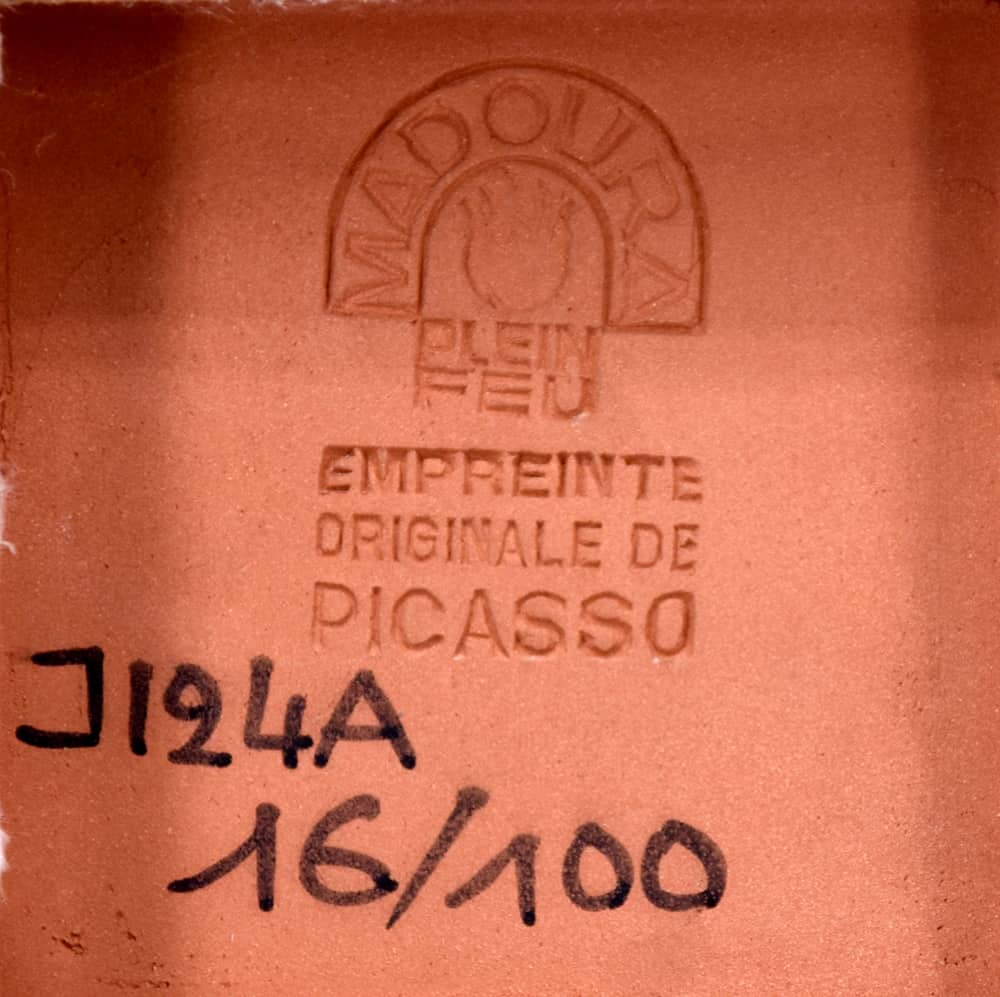
The marks and signatures on Picasso ceramics play a significant role in their authenticity, provenance, and overall value. Here's why they are crucial:
- Authenticity Verification: The marks and signatures on Picasso ceramics serve as a means of authenticating the artwork. Picasso often marked his ceramics with specific stamps or signatures, indicating their origin and connection to the artist.
- Provenance Documentation: Marks and signatures can provide important provenance information. They help establish the history and ownership of the artwork, adding to its value and credibility.
- Artistic Significance: The marks and signatures on Picasso ceramics are a testament to the artist's involvement and dedication to the medium. They contribute to the overall artistic significance of the piece and its connection to Picasso's wider body of work.
- Value and Collectibility: Picasso ceramics with clear and well-documented marks and signatures tend to hold higher value in the market. Collectors are willing to pay a premium for these authenticated pieces, considering them more valuable additions to their collections.
In summary, the marks and signatures on Picasso ceramics carry great significance in terms of authenticity, provenance, and value. They contribute to the overall story and artistic legacy of the artwork, making them an essential aspect of collecting Picasso ceramics.
Where to Find Picasso Ceramics
Picasso ceramics can be found in various locations, both online and offline. Here are some places to look for Picasso ceramics:
- Art Galleries: Visit local art galleries that specialize in modern and contemporary art. These galleries may have Picasso ceramics available for purchase or can assist in sourcing specific pieces.
- Art Fairs: Attend art fairs and exhibitions that focus on modern and contemporary art. These events often feature galleries and dealers showcasing Picasso ceramics and other collectible artworks.
- Auction Houses: Established auction houses like Christie's and Sotheby's often feature Picasso ceramics in their sales. These auctions provide an opportunity to acquire unique and valuable pieces directly from the market.
- Online Platforms: Online platforms specializing in art sales, such as Artsy and Artnet, offer a wide range of Picasso ceramics for sale. These platforms provide accessibility and convenience for collectors worldwide.
Online Platforms and Galleries
Online platforms and galleries are excellent resources for finding Picasso ceramics. Here's why they are worth exploring:
- Accessibility: Online platforms provide easy access to a wide range of Picasso ceramics from anywhere in the world. Buyers can browse through catalogs and make purchases at their convenience.
- Curated Selection: Online platforms and galleries curate their collections, ensuring that the artworks they offer are of high quality and authenticity. This saves collectors time and effort in searching for reputable sellers.
- Global Reach: Online platforms and galleries have a global reach, connecting collectors and sellers from different parts of the world. This expands the pool of available Picasso ceramics and offers a diverse range of options.
- Artistic Community: Online platforms and galleries often foster a sense of community among art enthusiasts and collectors. They provide forums for discussion, networking, and sharing insights about Picasso ceramics and other artworks.
Assessing the Value of Picasso Ceramics
Assessing the value of Picasso ceramics involves considering various factors that influence their market worth. Here are some key points to keep in mind:
- Factors Influencing Price: The rarity, edition size, condition, provenance, and artistic significance of a Picasso ceramic can impact its value. Pieces with unique designs or limited editions tend to command higher prices.
- Market Value: Keep track of recent auction results and market trends to gauge the current value of Picasso ceramics. This information can help you make informed decisions about buying and selling.
- Condition: The condition of the ceramic, including any damage or restoration, can affect its value. Well-preserved pieces with minimal wear or restoration tend to hold higher value.
- Demand and Collectibility: The popularity and demand for Picasso ceramics can influence their value. Works sought after by collectors and enthusiasts tend to command higher prices.
Factors Influencing Price
The value of Picasso ceramics can be influenced by various factors. Here are some key elements that impact their price:
- Rarity and Edition Size: Picasso ceramics produced in limited editions or those with unique designs tend to have higher value in the market. The smaller the edition size, the more exclusive and sought after the piece becomes.
- Condition: The condition of the ceramic plays a significant role in determining its value. Well-preserved pieces with minimal wear, restoration, or damage tend to hold higher prices.
- Provenance and Documentation: The provenance and documentation of a Picasso ceramic can add to its value. Pieces with clear and well-documented histories tend to be more desirable among collectors.
- Artistic Significance: The artistic significance of a Picasso ceramic can also influence its price. Works that showcase Picasso's unique style, innovation, and artistic vision tend to hold higher value.
| Factor | Impact on Price |
| Rarity and Edition Size | Higher value for limited editions and unique designs |
| Condition | Well-preserved pieces hold higher prices |
| Provenance and Documentation | Clear documentation adds to value |
| Artistic Significance | Works reflecting Picasso's unique style hold higher value |
How Condition Affects Value
The condition of a Picasso ceramic can significantly affect its value. Here's why:
- Preservation of Artistic Integrity: The condition of the ceramic ensures the artwork's aesthetic and artistic integrity. Well-preserved pieces showcase the intended design, colors, and textures envisioned by Picasso.
- Collectibility and Rarity: Ceramics in excellent condition are more collectible and rare, making them more valuable to collectors. They are less likely to have undergone significant restoration or damage over time.
- Conservation and Longevity: Properly maintained ceramics retain their value and longevity. Collectors value pieces that have been well-conserved and can be enjoyed for years to come.
- Restorative Costs: Ceramics in poor condition may require extensive restoration, which can be expensive and impact their value. Collectors are generally willing to pay more for pieces in good condition to avoid the costs and risks of restoration.
Considering the condition of a Picasso ceramic is essential when assessing its value. Well-preserved pieces with minimal wear, restoration, or damage tend to hold higher value and are more desirable among collectors.
Buying Tips for Beginners
For beginners interested in buying Picasso ceramics, here are some valuable tips to keep in mind:
- Research and Learn: Take the time to research Picasso's ceramics, their different styles, and their significance in the art world. Familiarize yourself with the market and educate yourself about different editions, markings, and authenticity.
- Set a Budget: Determine your budget before starting your collection. Picasso ceramics come in a wide range of prices, so it's important to set a budget that aligns with your financial capabilities.
- Seek Expert Advice: If you are unsure about the authenticity or value of a Picasso ceramic, consult with experts or professionals in the field. They can provide valuable insights and help authenticate the piece.
- Buy from Reputable Sellers: Purchase Picasso ceramics from reputable sellers, such as auction houses, art galleries, or trusted online platforms. This ensures the authenticity and quality of the pieces you acquire.
- Consider Editioned Ceramics: Editioned ceramics are a great starting point for beginners. These pieces are produced in limited numbers and are often more accessible in terms of pricing.
- Enjoy the Process: Collecting Picasso ceramics is an exciting journey. Enjoy the process of discovering unique pieces, learning about Picasso's artistic journey, and building your collection.
- Verify Authenticity: Authenticating Picasso ceramics is crucial. Look for specific markings, signatures, and documentation to ensure the authenticity of the piece. Consult experts or reference materials if needed.
- Document and Preserve: Once you acquire Picasso ceramics, document their provenance, condition, and any relevant information. Properly preserve and care for the artworks to maintain their value and longevity.
Starting Your Collection
Starting your collection of Picasso ceramics is an exciting endeavor. Here are some tips to get you started:
- Define Your Focus: Decide on the theme or style you want to collect. Picasso's ceramics offer a wide range of options, from animal sculptures to abstract designs. Choose a focus that resonates with you and your artistic preferences.
- Start with Editioned Ceramics: Editioned ceramics are a great starting point for beginners. These pieces are more accessible in terms of pricing and allow you to understand the market before venturing into more unique or rare works.
- Set a Budget: Determine your budget and stick to it. Picasso ceramics come in various price ranges, so it's essential to establish a financial plan for your collection.
- Research and Educate Yourself: Learn about Picasso's ceramics, their different editions, and the markings that authenticate them. This knowledge will help you make informed decisions and avoid potential pitfalls.
- Connect with Other Collectors: Join online forums or attend art events to connect with fellow collectors. Sharing experiences and insights can enhance your journey as a collector and provide valuable information about Picasso ceramics.
Negotiating Prices and Authenticity Verification
Negotiating prices and verifying the authenticity of Picasso ceramics are essential steps for collectors. Here's what you need to know:
- Research Market Prices: Familiarize yourself with the current market prices for Picasso ceramics. This knowledge will give you a better understanding of the fair value of the piece you are interested in and help you negotiate effectively.
- Consult Experts: Seek the advice of experts or professionals in the field to verify the authenticity of the Picasso ceramic you are considering. They can provide valuable insights and help authenticate the piece.
- Request Certificates of Authenticity: Ask the seller for certificates of authenticity or any other supporting documentation that verifies the origins and authenticity of the artwork. These documents add value and assurance to your purchase.
- Be Prepared to Negotiate: When negotiating the price of a Picasso ceramic, be prepared to make reasonable offers based on market prices and the condition of the piece. Remember that negotiation is a common practice in the art market.
- Trust Your Judgment: Trust your instincts and knowledge when negotiating prices and verifying authenticity. If something feels off or uncertain, consider seeking a second opinion or exploring other options.
Caring for Your Picasso Ceramics
Proper care and maintenance are essential for preserving the beauty and value of your Picasso ceramics. Here are some tips for caring for your collection:
- Display and Storage: Display your ceramics in a well-lit and controlled environment, away from direct sunlight or extreme temperatures. Use proper display stands or mounts to protect the pieces. When storing, wrap them in acid-free tissue paper or bubble wrap and keep them in a secure and humidity-controlled space.
- Handling: Handle your ceramics with clean, dry hands to prevent oil or dirt transfer. Avoid placing unnecessary pressure on delicate areas or protrusions.
- Cleaning: Use a soft, lint-free cloth to clean the surface of your ceramics. Avoid using harsh chemicals or abrasive materials that may damage the glaze or paint.
- Conservation: If your ceramics require restoration or conservation, consult professionals with expertise in ceramic conservation. They can provide guidance and services to preserve and restore your valuable pieces.
Display and Storage Tips
Proper display and storage are crucial for preserving the beauty and longevity of your Picasso ceramics. Here are some tips to keep in mind:
- Display: Choose a well-lit area to showcase your ceramics, away from direct sunlight or extreme temperature changes. Consider using display stands or mounts to highlight the unique features of each piece.
- Avoid Humidity: Humidity can damage ceramics over time. Use dehumidifiers or humidity control devices in your display area to maintain an optimal level of humidity.
- Gentle Handling: When handling your ceramics, be gentle and avoid applying unnecessary pressure. Hold them by the base or areas specifically designed for handling.
- Storage: If you need to store your ceramics, wrap them individually in acid-free tissue paper or bubble wrap. Place them in a secure and temperature-controlled storage area to prevent damage.
- Regular Maintenance: Clean your ceramics periodically using a soft, lint-free cloth. Avoid using harsh chemicals or abrasive materials that may scratch or damage the surface.
By following these display and storage tips, you can ensure that your Picasso ceramics remain in excellent condition and retain their value for years to come.
Maintenance and Preservation Best Practices
Maintaining and preserving your Picasso ceramics is essential for their longevity and value. Here are some best practices to keep in mind:
- Regular Cleaning: Clean your ceramics periodically using a soft, lint-free cloth. Gently wipe the surface to remove dust or dirt buildup. Avoid using water or harsh cleaning agents that may damage the glaze or paint.
- Avoid Exposure to Direct Sunlight: Protect your ceramics from direct sunlight, as prolonged exposure can cause fading or discoloration. Display them in an area away from windows or use UV-protective glass or film.
- Prevent Accidental Damage: Place your ceramics in a secure location where they are less likely to be knocked over or damaged. Use stable display stands or mounts to ensure stability.
- Monitor Environmental Conditions: Keep an eye on the temperature and humidity levels in your display area. Extreme fluctuations in these conditions can affect the integrity of the ceramics.
- Consult Conservation Professionals: If your ceramics require restoration or conservation, consult professionals with expertise in ceramic preservation. They can provide guidance and services to ensure the long-term preservation of your valuable pieces.
By practicing these maintenance and preservation best practices, you can enjoy your Picasso ceramics for years to come while preserving their beauty and value.
Provenance and Its Importance
Understanding the provenance of Picasso ceramics holds utmost significance in the realm of art collecting. Provenance refers to the documented history of ownership, tracing back to the artist. For Picasso's ceramics, knowing where a piece originated and its journey through different hands not only adds to its historical value but also authenticity. It provides a narrative that connects collectors with the artwork's past, enhancing its cultural and monetary worth. Provenance acts as a testament to the piece's legitimacy and is vital for serious collectors and enthusiasts.
Conclusion
In the realm of Picasso ceramics, understanding the evolution and significance of these coveted collectibles is key. Identifying authentic pieces, assessing their value, and caring for them are essential steps for beginners. Whether exploring auction houses or online platforms, each avenue offers a unique experience in acquiring these art treasures. By delving into the nuances of collecting, negotiating prices, and ensuring authenticity, you can embark on a fulfilling journey as a novice collector. Remember, preserving Picasso ceramics is as much an art form as acquiring them – cherish and care for these timeless creations as they enrich your space with artistic brilliance.
Frequently Asked Questions
What Makes Picasso Ceramics Unique?
Picasso ceramics are unique because they combine traditional pottery techniques with Picasso's distinctive artistic vision. Each ceramic piece is a one-of-a-kind creation and showcases Picasso's innovative approach to the medium. His ceramics reflect his expertise in modern art, with elements of cubism and abstraction present in their design.
How Can I Verify the Authenticity of a Piece?
Verifying the authenticity of a Picasso ceramic involves examining specific markings, signatures, and documentation. Look for unique marks or stamps on the piece, such as "Madoura Plein Feu" or "Empreinte Originale de Picasso."
Additionally, certificates of authenticity and proper provenance documentation can provide further assurance of the artwork's authenticity.
